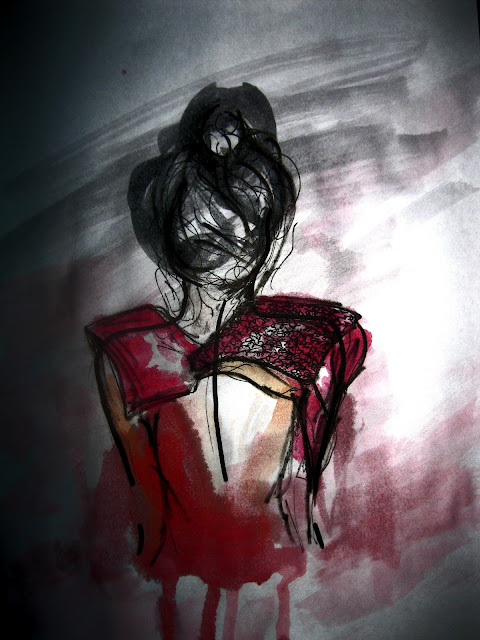Androgyny:
When Agyness Deyn appeared across magazines with her
androgynous style in 2007
It wasn’t a trend one would think would catch. Several
seasons later and borrowing from
the boys is even more popular. Clean cut lines and polished
tailoring poured down the runways and trickled on down through the markets.
With this trend it’s not so much about the
Individual pieces, but more about the entire look.
Androgynous pieces mixed with more feminine ones were clearly seen as well as
full suited looks.
I found that as the trend passed on down to the high street
it because more ‘boy’ than ‘man’.
The garments became more loose and the silhouette baggy and
oversized. The colours became brighter rather than just black and white.
Overall as long as one garment in the look is tailored
and well-structured it will exemplify androgyny.
Leather:
This season,
leather has taken on a whole new dimension. Unlike previous seasons where leather
was manufactured into complete garments, it crept into the form
of collars,
sleeves and panels this Autumn/ Winter. Being popular on every runway, leather
continued its way down through the markets and was widely used in both middle
and mass markets.
Leather emulates
a cool, gothic vibe and is extremely popular with bloggers and street style
enthusiasts.
In my research I
found that these leather sections were mostly used in combination with wool for
outer garments, creating a new and fresh trend. The mixes of textures are
exciting compared to the more obvious all leather jackets that appear season
after season. The only colour I seen being used was black, which in turn is
staying true to the Winter feel.
Oxblood:
Each
season a certain colour emerges and simmers across most of the shows.
This
season it was ox blood. A somewhat ‘’new’’ shade to most designers
colour
palette was mostly accompanied by custom shades of burgundy.
The
colour proportion varied from small details to full outfits and accessories.
Through
my research I noticed how the shade got brighter as it fell through the markets
almost
losing its personality and becoming practically red as it reached mass markets.
Cottons
and leather were quite popular fabrics with this trend probably due to the
deepness
of
leather and cotton being easily dyed.
The
colour was popular in many other trends but seemed to stay in the more feminine
side especially in print.
Oversized:
Comfort is one
of the most popular trends across runways for autumn and winter
and this season
it was oversized everything. From coats to jumpers, pants and dresses
the trend has
quickly grown. Compared to last winter designers didn’t hold back.
The bigger, the
better. The silhouette is cocooning yet was always paired
with a slim
garment to create balance.
The fabric I
came across the most was wool. Being the most comfortable
and shapely.
As the trend
fell through the markets it became less extravagant and more flattering
on the figure
yet still held the cocoon shape in most garments.
Coats were the
most popular in this trend but variations of the classic shift dress
were also quite
popular. This trend also blends well with androgyny as the loose
fittings creates
a boyish frame.
Print: Menswear:
In menswear, most
autumn winter collections often revolve around crisp suits, heritage jackets
and simple knitwear. This season however a fresh palette of prints were flashed
across runways all season. Every type of print imaginable was used. From
graphic to floral, print was used in pants, shirts and knitwear.
Through my research print became increasingly less daring on
the high street. Duller shades
were used yet they were still innovative and exciting.
Simple fabrics like cotton were widely
used so comfort was definitely not confiscated. My favourite
were graphic prints seen on the runway
but were dumbed down through the markets. It was definitely
a mixed colour palette but was mostly paired with simple shade of black and
grey to get the full effect.
Tailoring: Children's wear
This season in children’s wear I found that tailored
garments for girls was an obvious trend.
Garments were fitted, mostly jackets. Comfortable fabrics
were used such as cotton, wool blends and polyester. Colours were not prominent
and stayed on the more neutral side with splashes of
christmas shades of reds and green.
As the trend developed in the markets the tailoring became
looser and became more focused on comfort and movability yet still holding a
certain tailored look. The items became more functional
but still
appeared stylish and on trend





























































